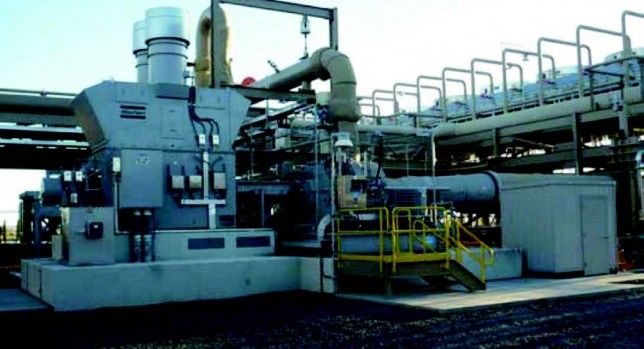Commercial applications of high temperature power recovery turboexpanders use the expander to drive an air compressor which charges the process unit that produces the high temperature gas that expands to atmosphere across the turboexpander. The compressor/expander unit, together with its process unit, is therefore very similar to a special purpose combustion gas turbine engine cycle, with the process unit as the “combustion chamber.”
Power recovery from Catalytic Cracker flue gases is one of the most important applications using turboexpanders in the petroleum refining field. FCCU Hot Gas Expanders are commercially available in speeds from 3600 to 7500 rpm, gas inlet conditions to 4.8 bara (70 psia) and 760°C (1400 deg F). Exhaust pressure is typically 1.24 bara (18 psia), mass flows range from 200,000-640,000 kg/h (440,000-1,410,000 Ib/hr). Power recovered ranges from 2600-37,300 kW (3500-50,000 hp). Units are typically 1 or 2 stages.
Today’s blog entry provides the calculation for shaft power available from a power recovery turboexpander:
Description: Attached Image
Description: Attached Image
where:
ηi = Isentropic Efficiency. Use 85% for “as new” efficiency until specific vendor estimates are obtained. Assume an average isentropic efficiency 5% lower than the “as new” condition for economic studies that allow for erosion during a three year run.
ηm = Use 99%, allowing for bearing losses, and assuming no gear unit.
M = molecular weight of inlet gas, kg / kg-mol (lb / lb-mol). Assume value as 30.2 till specific flue gas analysis is available.
R = gas constant 8.31447 (1545) kJ / kg-mol.K (ft-lbf / lb-mole.⁰R)
W = Mass flow rate, kg/s, (lb/min)
T1 = Inlet temperature, K (⁰R)
T2 = Exhaust temperature, K (⁰R)
k = specific heat ratio; use 1.3 unless the flue gas analysis gives a better value
P1 = gas pressure at expander inlet flange, kPaa (psia)
P2 = gas pressure at expander exhaust flange, kPaa (psia)
Z = avg compressibility factor ((Zin + Zout) / 2)
Expander Exhaust Temperature:
Description: Attached Image
The expander exhaust temperature is used to calculate the remaining flue gas heat which is still available for recovery by other means.


